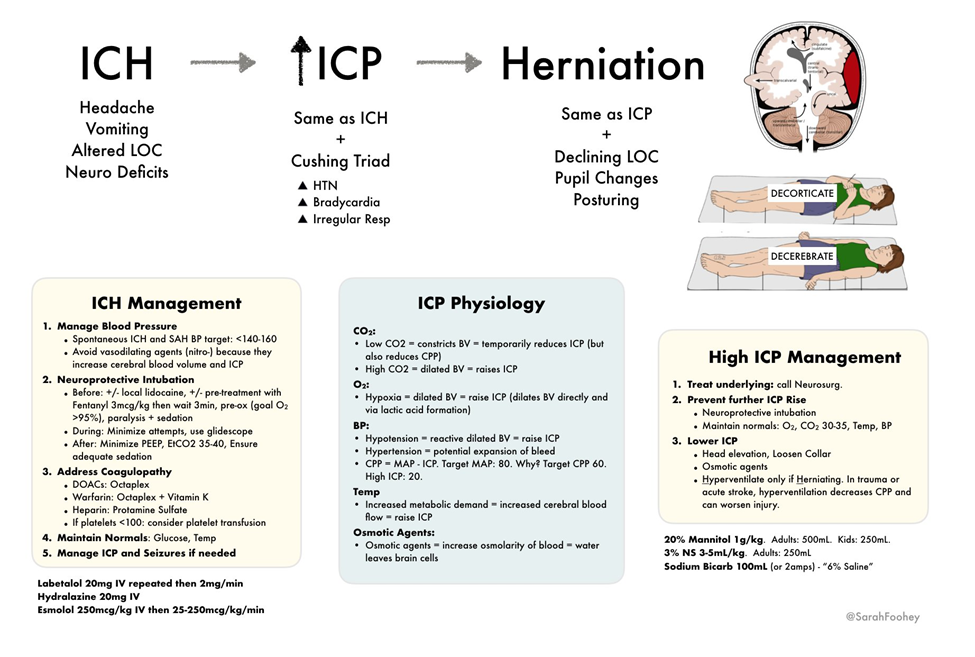The assessment that indicates a fluid volume excess in a patient in the acute phase of a CVA is:
adventitious breath sounds
weak pulse
hypotension
poor skin turgor
The Correct Answer is A
A. Adventitious breath sounds:
Adventitious breath sounds refer to abnormal lung sounds heard upon auscultation of the chest. These sounds include crackles (rales), wheezes, rhonchi, and pleural friction rubs. In the context of fluid volume excess, particularly in the acute phase of a cerebrovascular accident (CVA) or stroke, adventitious breath sounds such as crackles are indicative of pulmonary edema. Pulmonary edema occurs when there is an excessive accumulation of fluid in the lungs, impairing gas exchange and leading to symptoms such as shortness of breath and respiratory distress.
B. Weak pulse:
A weak pulse may suggest poor perfusion or decreased cardiac output rather than fluid volume excess. While decreased cardiac output can be a consequence of heart failure, which may be associated with fluid volume excess, a weak pulse is not a direct indicator of fluid overload. In the acute phase of a CVA, a weak pulse may prompt further assessment for other cardiovascular complications or neurogenic shock.
C. Hypotension:
Hypotension, or low blood pressure, is not typically associated with fluid volume excess. Instead, hypotension may indicate hypovolemia, shock, or other underlying cardiovascular conditions. While hypotension can occur secondary to severe heart failure or fluid overload in some cases, it is not a direct indicator of fluid volume excess in the acute phase of a CVA.
D. Poor skin turgor:
Poor skin turgor is a clinical finding associated with dehydration rather than fluid volume excess. In dehydration, the skin loses its elasticity and becomes less resilient when pinched. In contrast, fluid volume excess is characterized by edema, which may manifest as pitting or non-pitting edema, rather than poor skin turgor. However, in fluid volume excess, the skin may appear stretched or taut due to the accumulation of fluid in the interstitial spaces.
Nursing Test Bank
Naxlex Comprehensive Predictor Exams
Related Questions
Correct Answer is D
Explanation
A. Dizziness and problems with balance
While dizziness and problems with balance can occur more frequently in older adults due to age-related changes in the vestibular system and other factors, persistent or severe dizziness or balance issues should be evaluated further as they could indicate underlying neurological or medical conditions.
B. Slow papillary response to light
This finding may be considered abnormal, especially if it represents a significant change from the individual's baseline. While age-related changes in pupil function can occur, a slow or sluggish pupillary response to light may indicate dysfunction of the oculomotor nerve or other neurological issues and should be investigated further.
C. Jerky eye movements
Jerky eye movements, such as nystagmus, can be abnormal and may indicate dysfunction of the vestibular system or other neurological conditions. While some degree of nystagmus can occur with age, persistent or severe jerky eye movements should be evaluated further.
D. Absence of the Achilles tendon jerk
This finding may also be considered abnormal. The Achilles tendon reflex, tested using the deep tendon reflex (DTR) examination, can diminish with age but should not be completely absent in the absence of specific medical conditions affecting the reflex arc or spinal cord function.
Correct Answer is C
Explanation
A. Instruct the client to perform controlled coughing and deep breathing.
This intervention is not appropriate for a client with increased intracranial pressure. Controlled coughing and deep breathing can increase intrathoracic pressure, which can in turn increase intracranial pressure. Therefore, this intervention should be avoided in clients with increased ICP.
B. Provide a brightly lit environment.
This intervention is not appropriate for a client with increased intracranial pressure. Bright lights can stimulate the reticular activating system and increase arousal, potentially exacerbating cerebral metabolic demand and intracranial pressure. Therefore, it is recommended to provide a calm, quiet environment with subdued lighting for clients with increased ICP.
C. Elevate the head of the bed 30°.
This intervention is correct. Elevating the head of the bed to 30 degrees promotes venous drainage from the head and reduces intracranial pressure. It helps prevent venous congestion in the brain and improves cerebral perfusion. This position is commonly used in clients with increased intracranial pressure to optimize cerebral blood flow.
D. Encourage a minimum intake of 2,000 mL/day of clear fluids.
This intervention is not appropriate for a client with increased intracranial pressure. While maintaining hydration is important for overall health, excessive fluid intake can increase intracranial pressure by increasing cerebral blood volume and cerebrospinal fluid production. Therefore, fluid intake should be carefully monitored and adjusted based on the client's condition and fluid balance.

Whether you are a student looking to ace your exams or a practicing nurse seeking to enhance your expertise , our nursing education contents will empower you with the confidence and competence to make a difference in the lives of patients and become a respected leader in the healthcare field.
Visit Naxlex, invest in your future and unlock endless possibilities with our unparalleled nursing education contents today
Report Wrong Answer on the Current Question
Do you disagree with the answer? If yes, what is your expected answer? Explain.
Kindly be descriptive with the issue you are facing.
